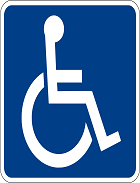What is Higher-Order Thinking?
What is Higher-Order Thinking?
 Higher-order thinking skills, based on learning taxonomies, is a concept of education reform. Higher-order thinking distinguishes critical thinking from lower order learning outcomes. Higher-order thinking skills or HOTS include synthesising, analysing, comprehending, evaluation, reasoning, and application of the available information.
Higher-order thinking skills, based on learning taxonomies, is a concept of education reform. Higher-order thinking distinguishes critical thinking from lower order learning outcomes. Higher-order thinking skills or HOTS include synthesising, analysing, comprehending, evaluation, reasoning, and application of the available information.HOTS is based on the taxonomies of learning which was mentioned in the 1956 Benjamin Bloom’s book ‘Taxonomy of Educational Objectives: The Classification of Educational Goals’. Higher-order thinking skills were mentioned in the top three levels of Bloom's taxonomy which are- analysis, synthesis, and evaluation.
Blooms Taxonomy and HOTS
Bloom’s Taxonomy was designed with six levels to promote higher order thinking. The six levels are- knowledge, comprehension, application, analysis, synthesis and evaluation. In contrast to lower-order thinking skills which involves memorisation, higher order thinking requires thinking and application of knowledge.
The top three levels of Blooms Taxonomy is displayed in the form of a pyramid with ascending levels on top of the structure such as analysis, synthesis, and evaluation. These levels of taxonomy all involve critical or higher order thinking. Students who are able to think are those who can apply the knowledge and skill they have learned to new contexts.
-
 Analysis
Analysis
Analysis is the fourth level of Bloom's pyramid which involves students to use their own judgment to analyse the knowledge they have learned. At this level, they began to understand the underlying structure of knowledge and will also be able to distinguish between fact and opinion.
-
Synthesis
Synthesis is the fifth level of Bloom's Taxonomy pyramid which requires students to infer relationships among sources such as essays, articles, work of fiction, lectures and even personal observations. For example, the student will have to infer the relationship between what he/she has read in a newspaper article and what the student has actually seen. At this level students goes beyond relying on previously learned information and analysing them.
-
Evaluation
Evaluation is at the top of the Bloom’s Taxonomy pyramid which involves students making judgments on values of ideas, items and materials. Evaluation is placed at the top level of Bloom's taxonomy pyramid because at this level students are expected to mentally assemble all that they have learned to make informed and sound evaluations of the material.
HOTS in Special Education
Though it may sound difficult to introduce HOTS for students with special needs, children with learning disabilities may benefit from educational programmes such as HOTS. Historically, due to the evidence shown in their disabilities of learning, teachers consider lower expectations leading to lower order thinking skills that are practiced through drill and repetition.
Traditional education has favoured the acquisition of knowledge especially among elementary school children over the application of knowledge and critical thinking. Advocates believe that without a basis in fundamental concepts, students cannot learn the skills they need to survive in the outside work world. Reform-minded educators see the attainment of higher-order skills and problem-solving skills to be very essential from this outcome.





















